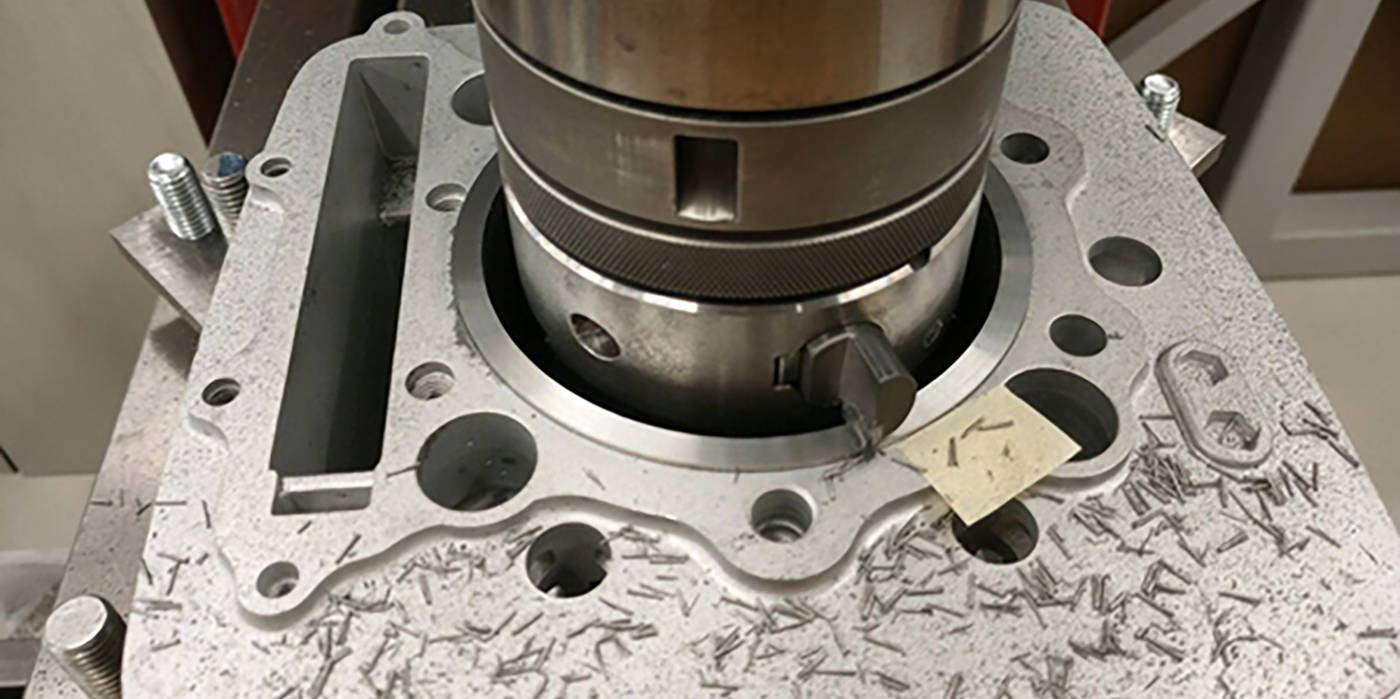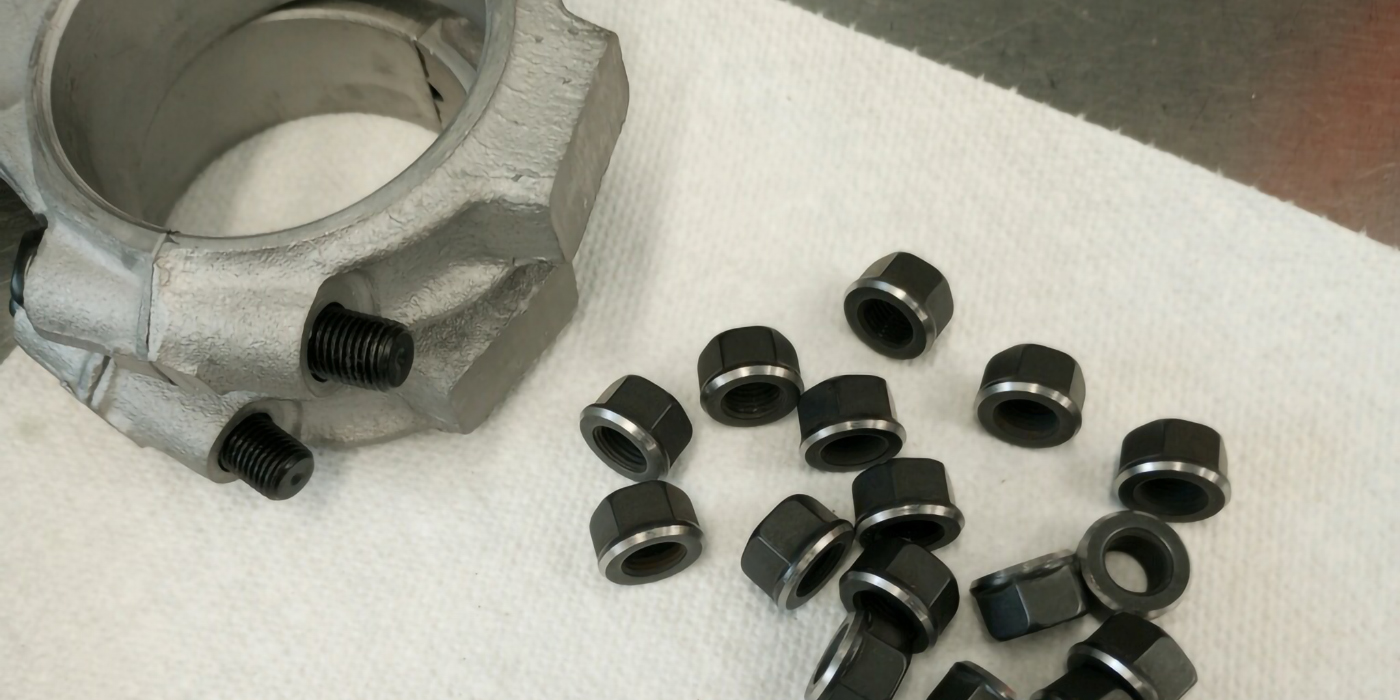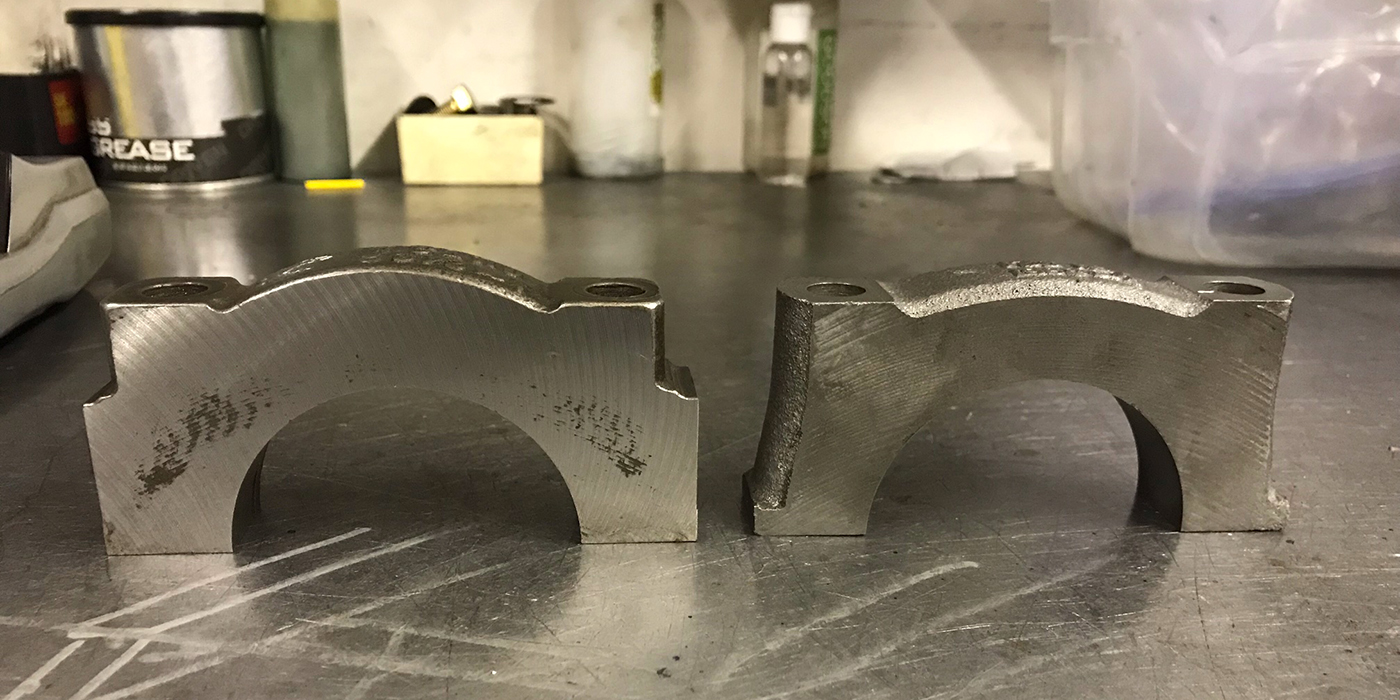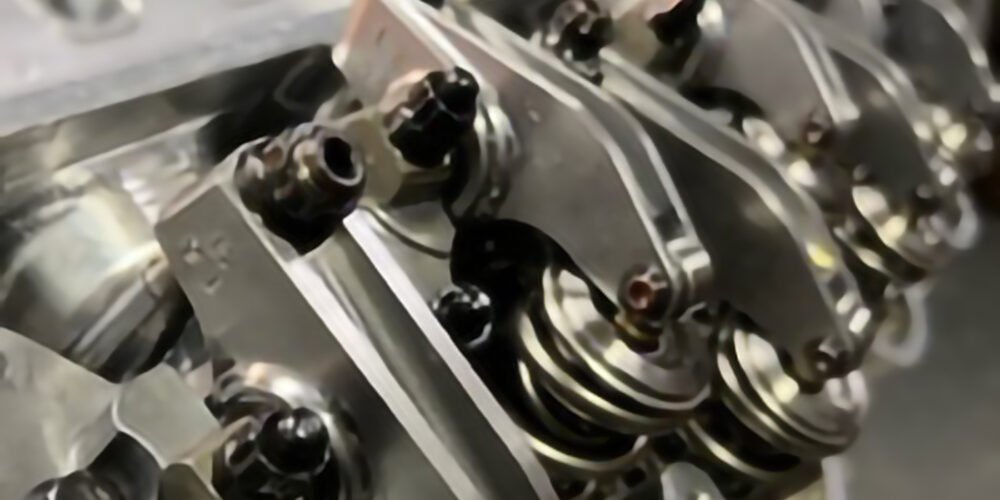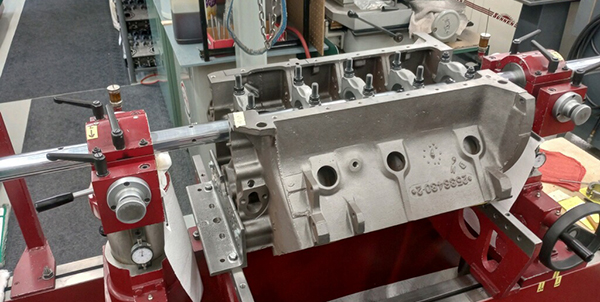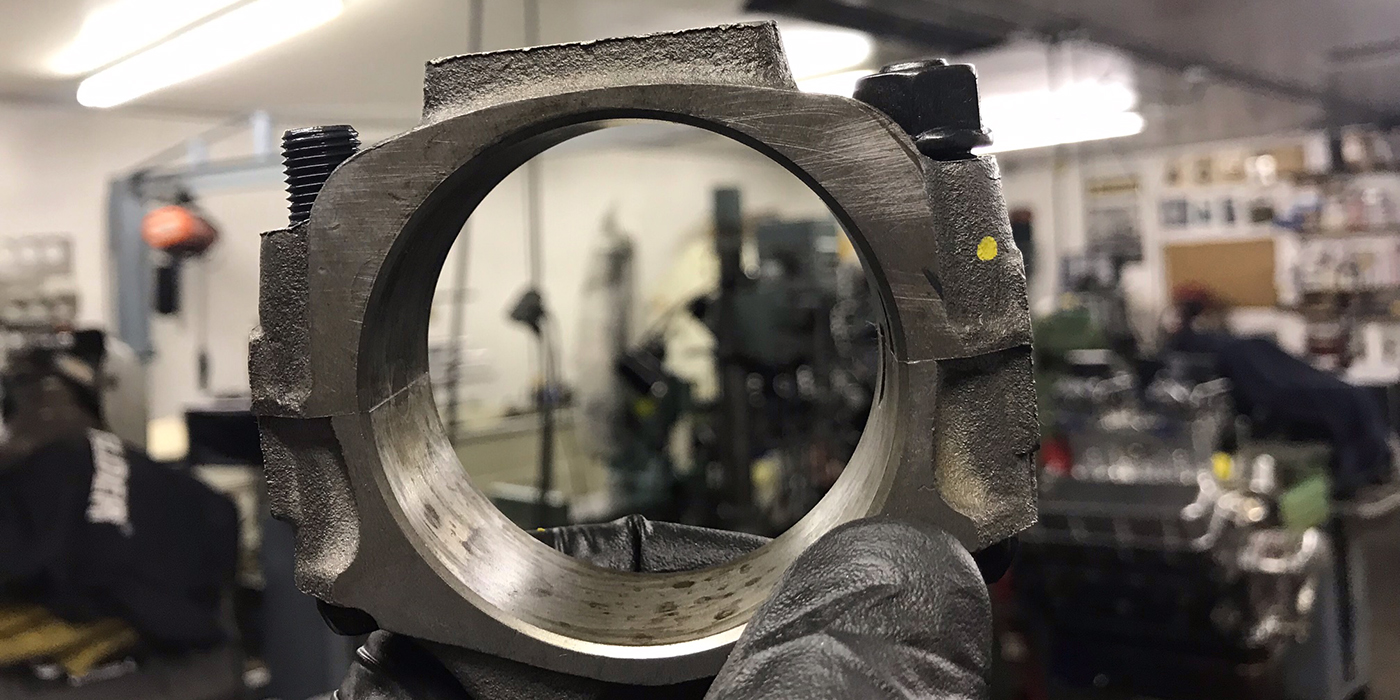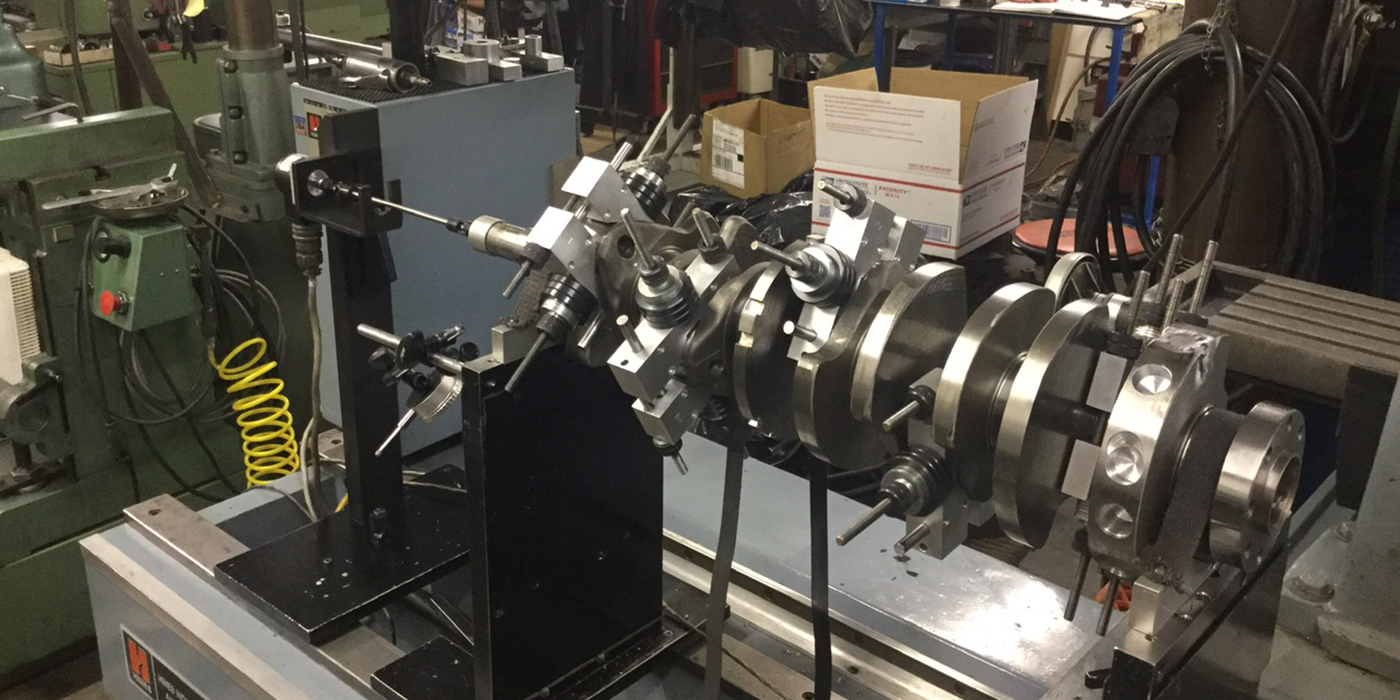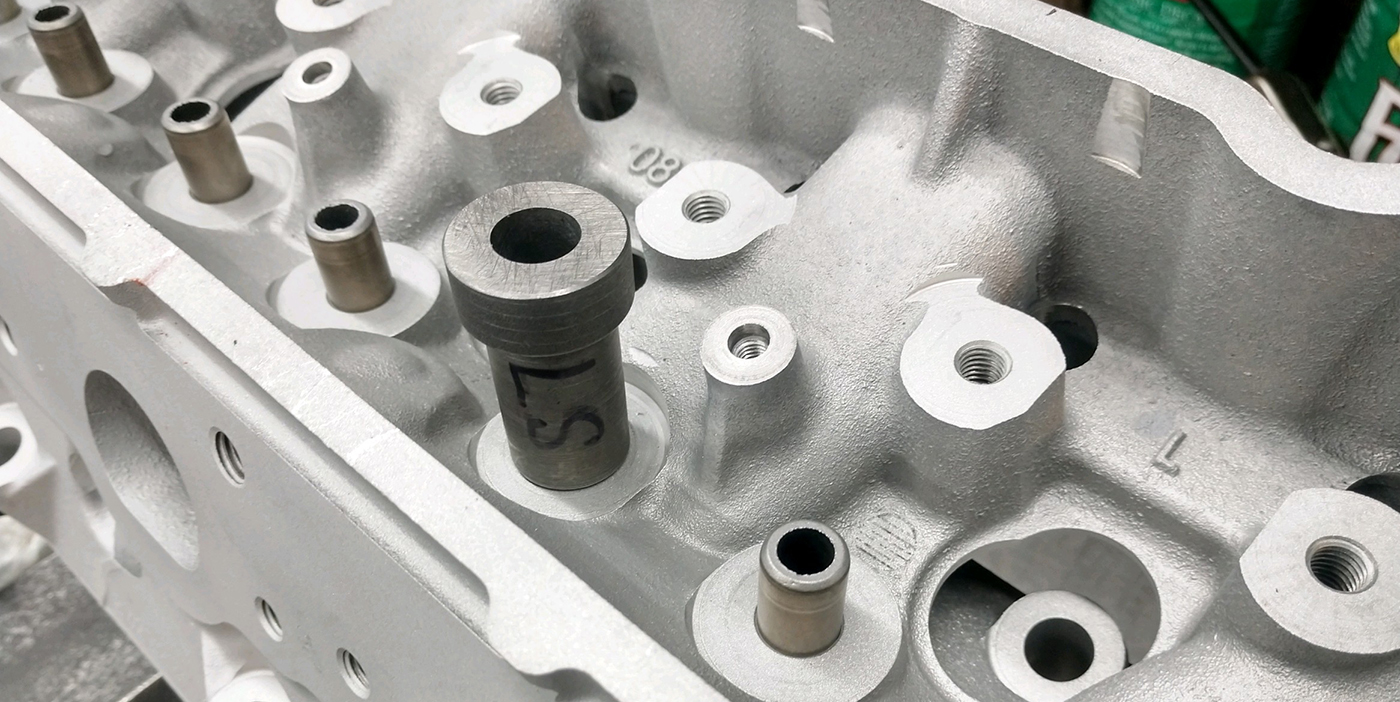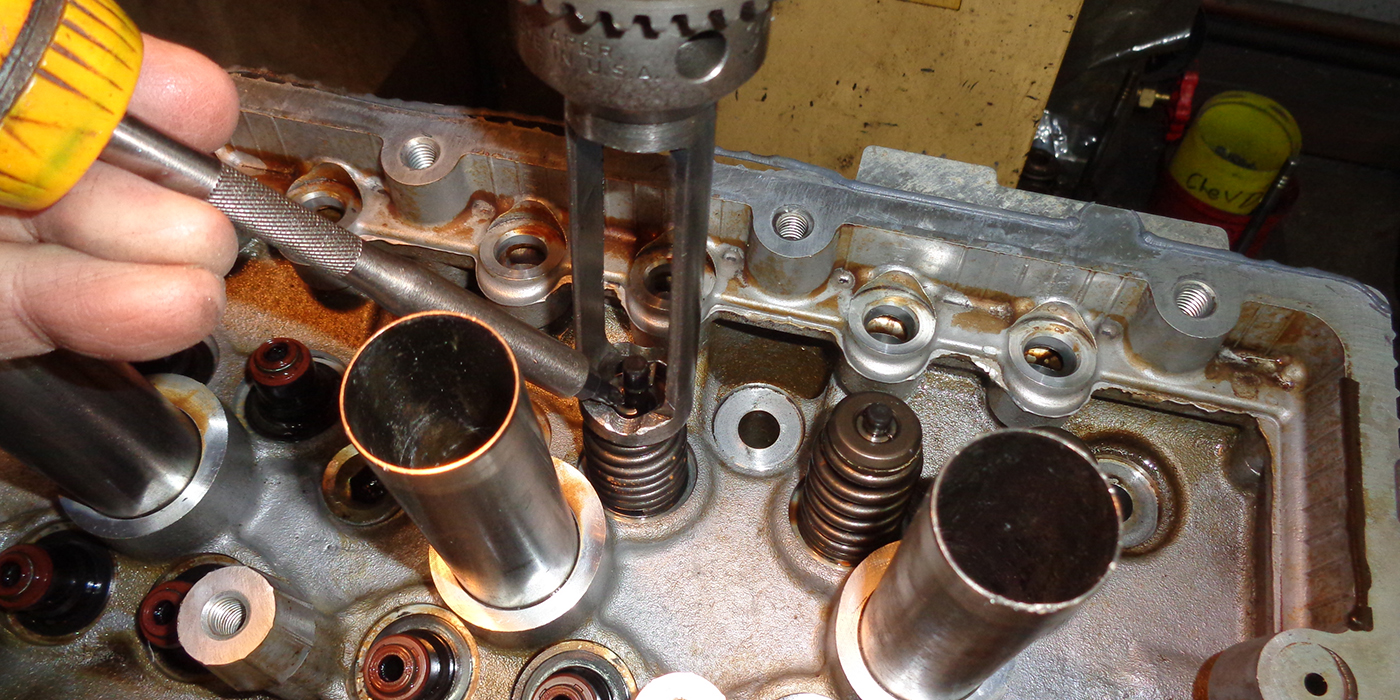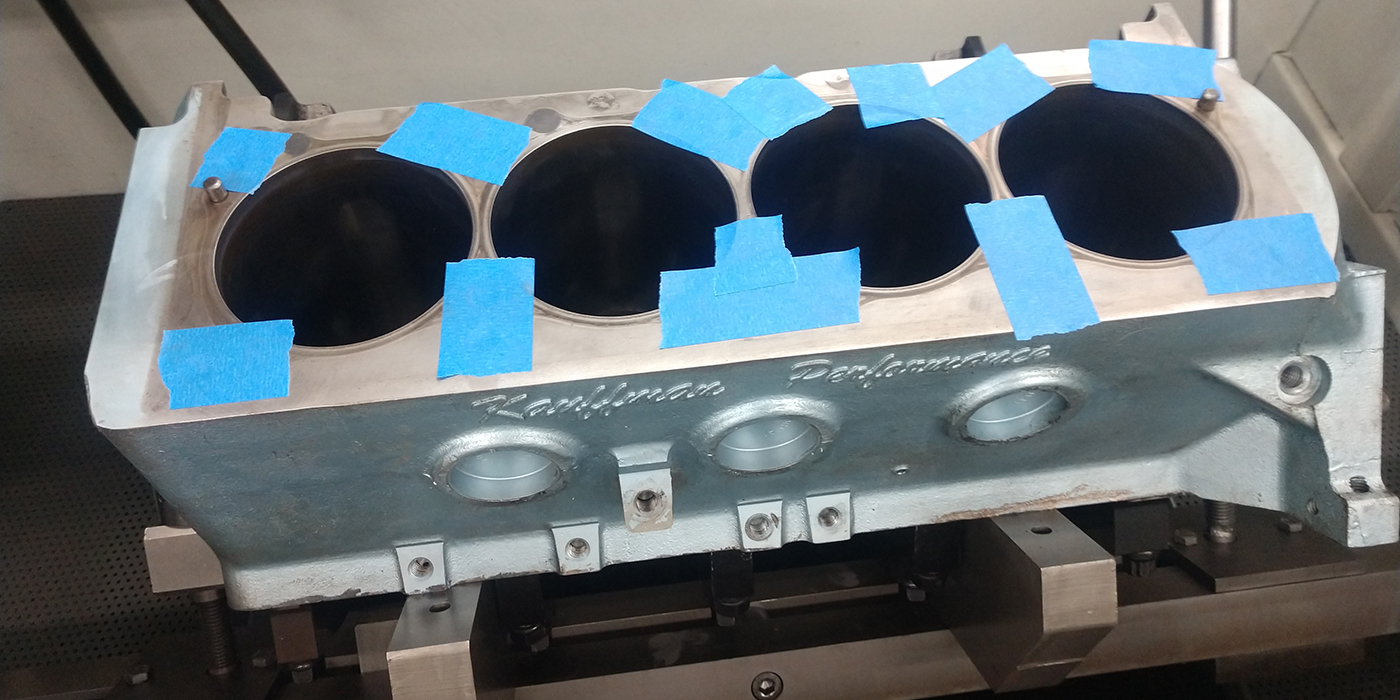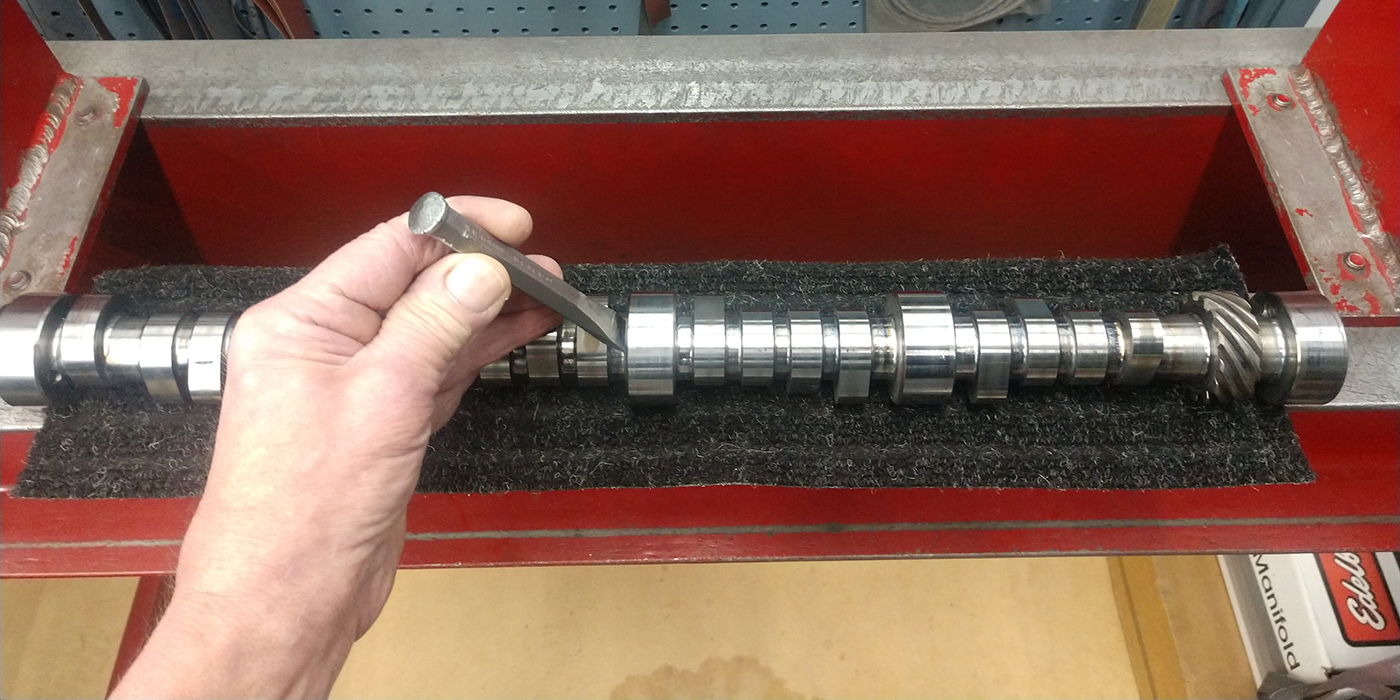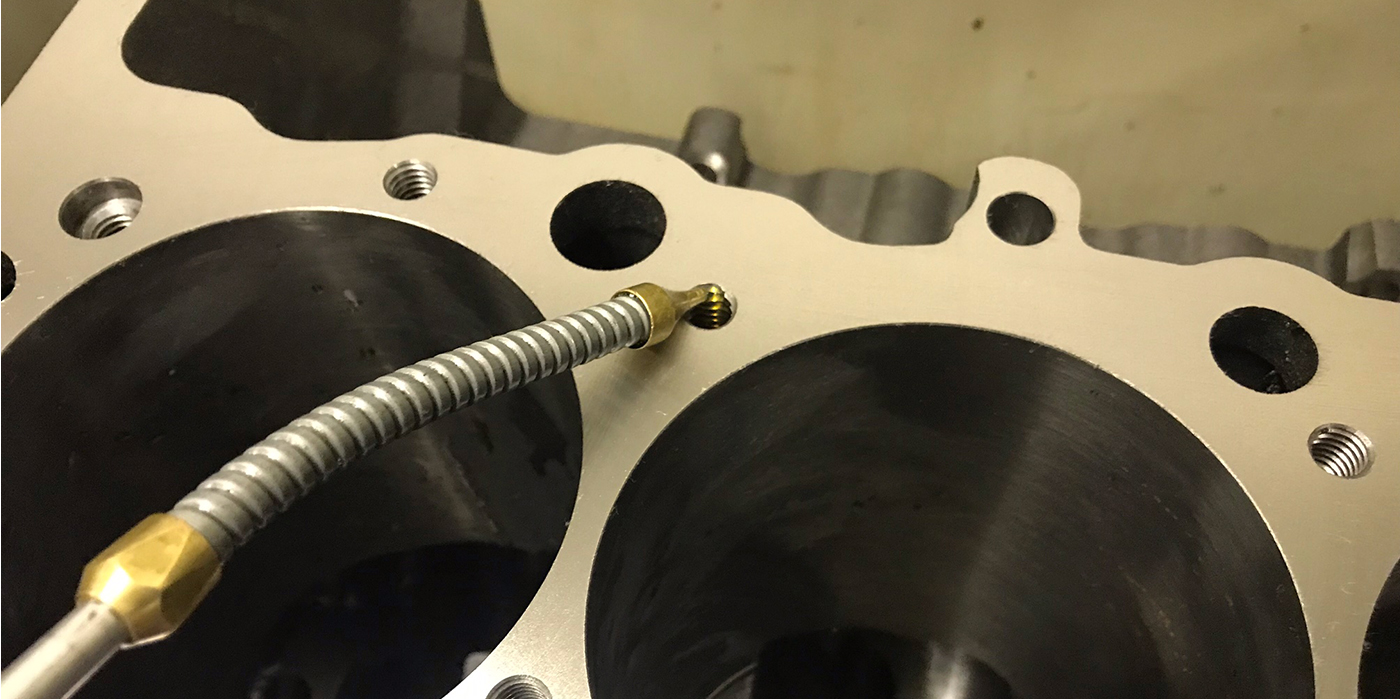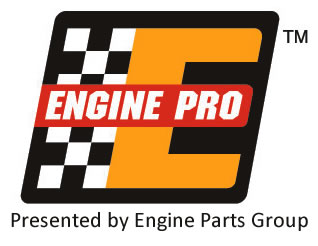 Combustion Chamber Molds
Combustion Chamber Molds
When making chamber molds for a variety of purposes, including holding up the valves on the assembly bench, (as opposed to a beanbag or shop rag) common auto body filler (Bondo) works very well. It’s fast and very inexpensive.
Just mix the body filler and fill chambers of an assembled head. The molds release easily if you just spray a little silicone into the chamber for a release agent before filling. At pennies per mold, it’s a very practical way to make enough molds of each chamber for assembling heads or for many other purposes such as determining piston dome requirements, valve relief locations, etc.
Keith Morganstein
Max Effort Engines
Sutton, MA
Metal Chips in the Media
To save money on media blasting, I use the metal chips generated from my boring bar and brake lathe as a blasting media. I installed a reducer in the feed line to generate the correct amount of air speed, then use the chips instead of glass bead. I get a nicer finish on both iron and aluminum parts.
Gary Musman
Channel City Engineering
Santa Barbara, CA
On a More Personal Note…
I got a handwritten letter in the mail this week, and since it’s so unusual these days, I opened it first.
Inside there was a plain note card with these words scrawled in neat block letters, “Hi Steve, just a quick note to thank you for your recent order. We appreciate your business.”
Hand-addressed envelopes always get opened. Handwritten letters always get read. A creative machine shop marketer could mail notes to local engine installers asking them to drop by the shop for a free cup of coffee and a tour, or the note might offer a discount on a portion of their next job.
The note doesn’t have to be long. In fact, the shorter the better. And for the price of a $.49 stamp, you just can’t beat this cost effective marketing tool.
Steve Rich
Sterling Bearing Inc.
Kansas City, MO
Get the Job Into the Shop
When I get a call for an engine rebuild, I am not immediately willing to give an exact price over the phone. I like to give a ballpark estimate and tell them that not until after we take it apart and check out the job completely, will we be able to give them a better idea on the exact price. I encourage them to bring it to me to check out first. Once that job comes through the door, I have the potential to make it a bigger sale instead of spending time on the phone debating with them the cost without ever seeing the job.
Jeffrey Myers
MAR Automotive, INC
Philadelphia, PA
Roller Timing Set Block Clearance
When using a Double Roller timing set on a GM 350 Vortec or a GM K block, you must check the clearance between the cam gear and the bosses around the oil galleys in the block. Some blocks may need to have some grinding done for clearance and on some this was already done at the factory.
An easy way to check is to place the cam gear on a camshaft then carefully install your cam into the block.
Now, just spin the gear and if you see it hitting the block just grind on the bosses until the gear has plenty of clearance. If not done, the gear will grind off metal filings that will be carried throughout the motor by the oil and we all know the damage this can cause.
Greg Myall
Engine and Performance Warehouse
Oakland, CA
Cylinder Liner Cavitation Erosion
Cavitation erosion is often found in diesel engines on the exterior walls of wet cylinder liners. The amount of erosion and decay will vary from engine to engine and may also vary from cylinder to cylinder. Vertical strips or patches of decay often form outside the cylinder corresponding with the piston thrust face. They also form just over the top sealing ring of the liner. If not kept in check, coolant may eventually penetrate the cylinder and contaminate the oil or oil may be introduced to the coolant.
It has been proposed from a group of engine rebuilders and parts manufacturers that this cavitation erosion is caused by excessive harmonic vibrations in the engine and possibly by or in conjunction with loose fitting cylinder liners. Both cause the formation and implosion of vapor bubbles within the coolant which attack and erode the cylinder liner surface. Vibration is caused as the pistons move up and down within the cylinders, especially at the piston thrust area. The surface of the cylinder sleeve that comes in contact with the coolant is moving in and out very quickly. During this process small bubbles are produced and struck. The resulting implosion causes shock waves against this surface that have been calculated to reach over 10,000º F and pressures more than 10,000 psi.
Cost effective materials to manufacture parts from that would prevent this cavitation erosion have not yet been found. Some coatings have been applied to slow the decay and extend engine life before major repairs are needed. A reduction in harmonic vibrations will also eliminate cavitation. Correct fitting liners cannot be over stressed. Incorrect clearance between liner and cylinder block can be a serious contributor to liner vibration. In many cases cavitation can be avoided by making sure the fuel injection complies with the manufacturer’s specifications, the engine’s speed is governed according to the manufacturer’s data and that these controls function.
Supplementary Cooling Additives (SCA) are specified by manufacturers and these additives form a protective coating on surfaces exposed to the coolant in an effort to reduce cavitation erosion.
Following proper maintenance schedules will help keep the proper level of concentrations of these SCA’s aiding cavitation protection, to maintain proper pH to avoid corrosion and to check water hardness to avoid mineral deposit formation. All manufacturer’s recommendations regarding additives, coolants and coolant filters as well as maintenance schedules should be strictly adhered to and followed at all times.
Engine Pro Technical Committee with thanks to Howard Enterprises


